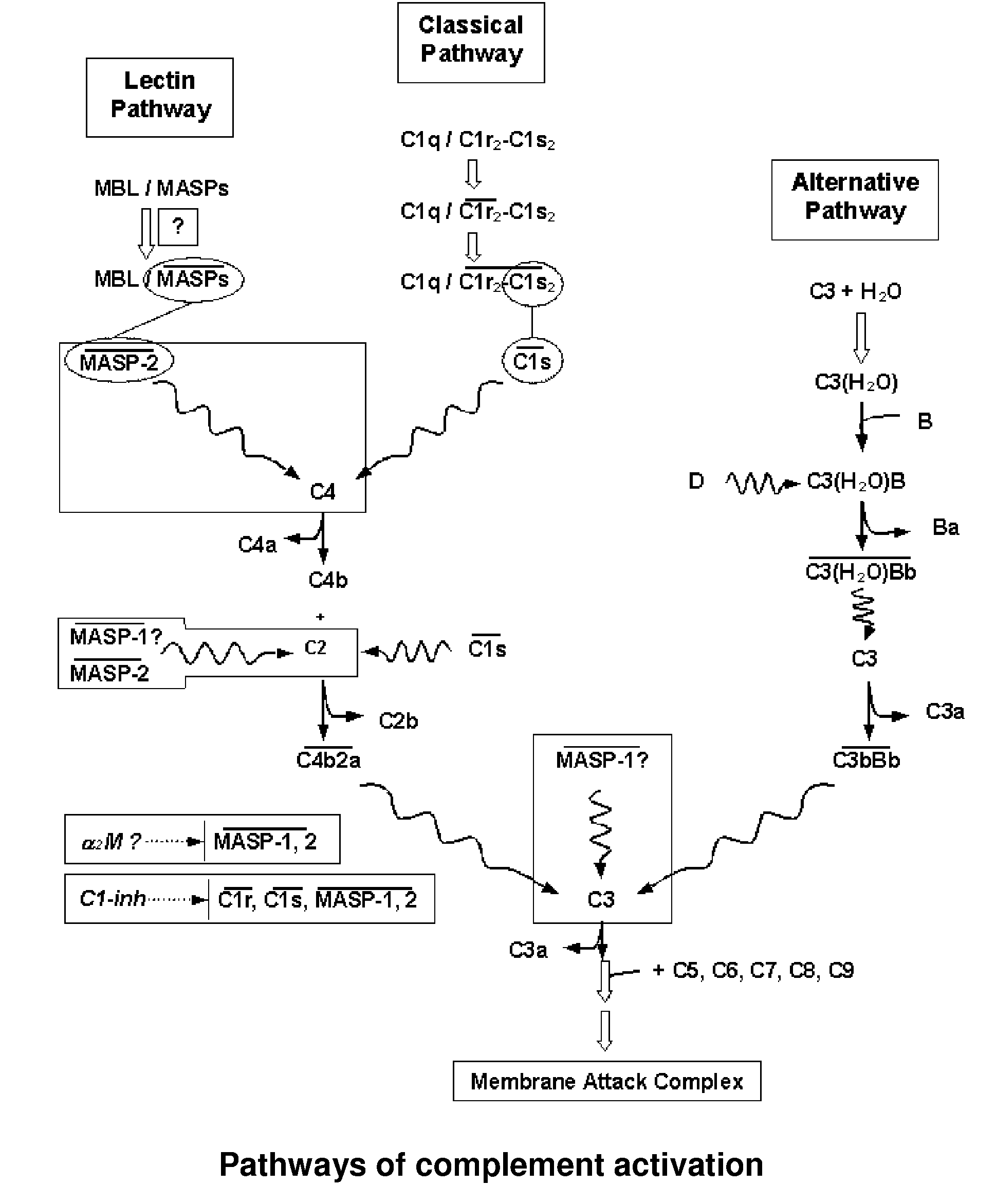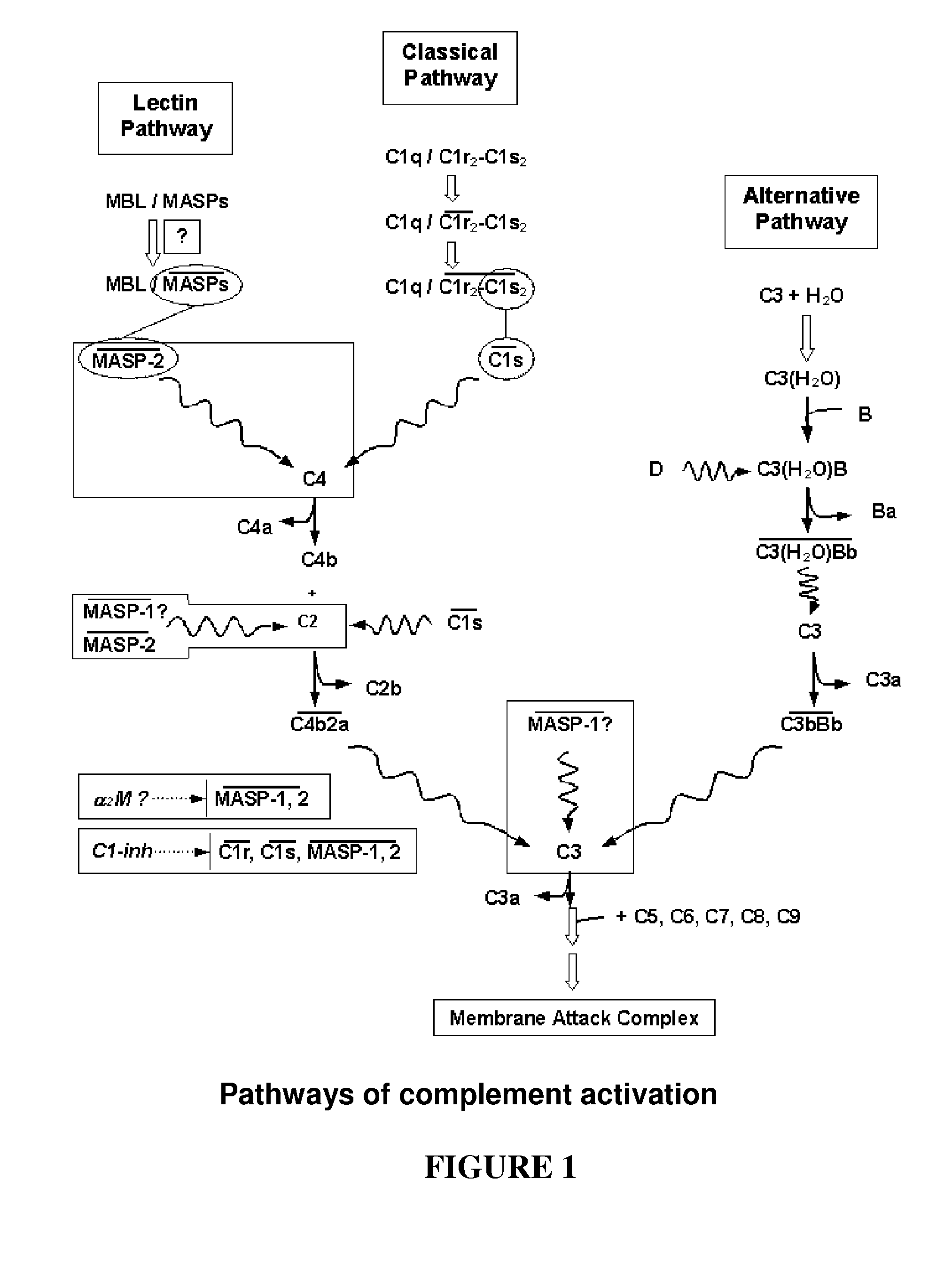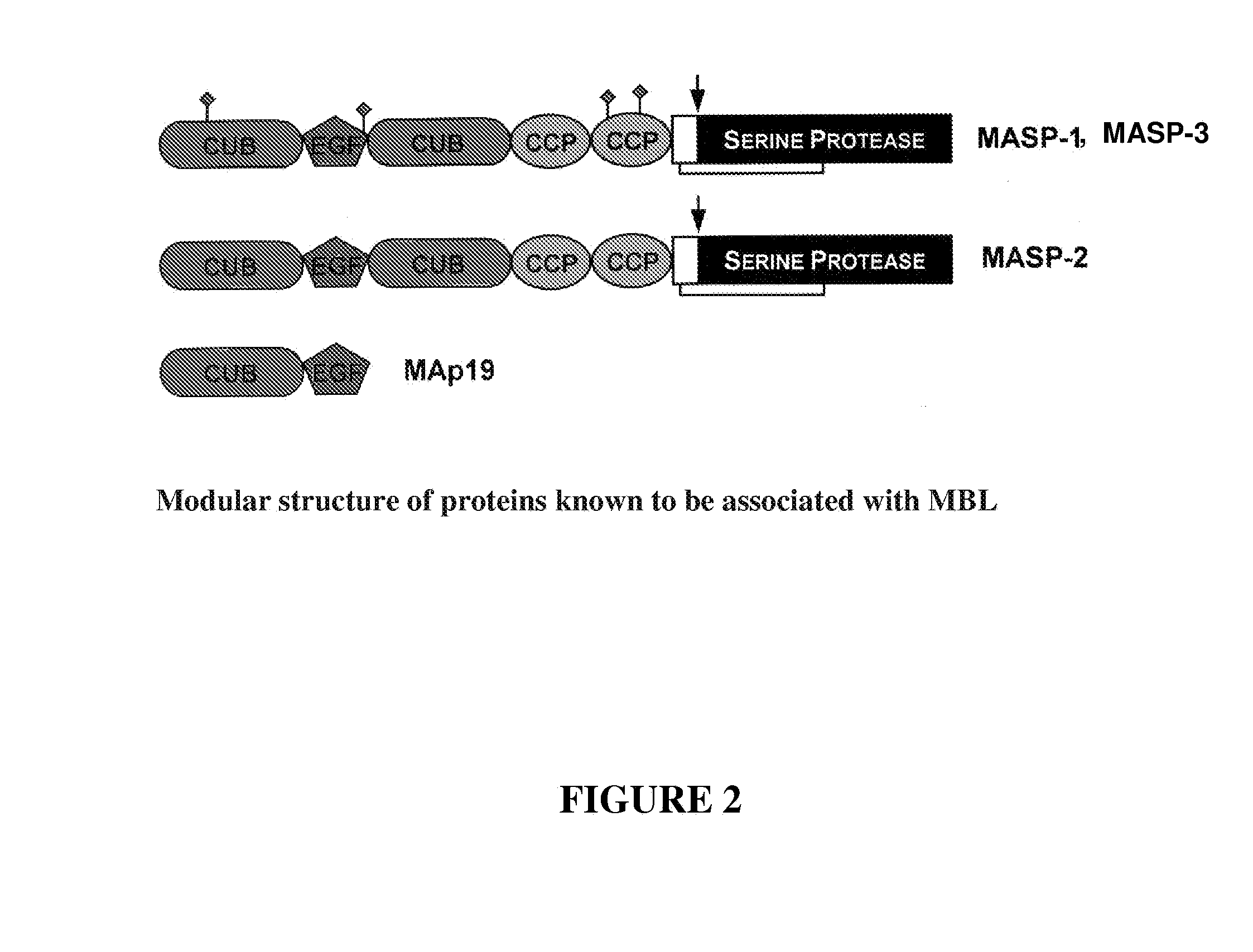Folded recombinant catalytic fragments of multidomain serine proteases, preparation and uses thereof
a serine protease and recombinant technology, applied in the field of unglycosylated folded cterminal fragments of multidomain serine proteases, can solve the problems of severe toxicity and side effects, large amount of inflammation, tissue damage, other disease states, etc., and achieve the effect of increasing the efficiency of bacterial protein expression
- Summary
- Abstract
- Description
- Claims
- Application Information
AI Technical Summary
Benefits of technology
Problems solved by technology
Method used
Image
Examples
Embodiment Construction
[0179]Below the invention is further explained via specific examples. The skilled person will understand that many variations based on the same inventive idea can be carried out, said variations being therefore within the scope of the invention.
1. Materials and Methods
Construction of Recombinant Plasmids for the Expression of the MASP-1, MASP-2 and MASP-3 Fragments
[0180]Coding sequences of MASP-1 and MASP-2 fragments were obtained by PCR starting from bacterial vectors comprising full length cDNAs of the human liver MASP proteins (the vectors were a kind gift of Dr. Schwable, W, Institut fur Hygiene, University of Innsbruck, Austria). The cDNAs are also available from human liver cDNA library and are disclosed e.g. by Takada F et al. (1993) and Sato T et al. (1994) (MASP-1, Swiss-Prot accession No: P48740) and by Thiel S et al. (1997) and Stover C. M. et al. (MASP-2, Swiss-Prot accession No: O00187).
[0181]For all recombinant constructs the pET-17b expression vector was digested with...
PUM
| Property | Measurement | Unit |
|---|---|---|
| concentration | aaaaa | aaaaa |
| concentration | aaaaa | aaaaa |
| concentration | aaaaa | aaaaa |
Abstract
Description
Claims
Application Information
 Login to View More
Login to View More - R&D
- Intellectual Property
- Life Sciences
- Materials
- Tech Scout
- Unparalleled Data Quality
- Higher Quality Content
- 60% Fewer Hallucinations
Browse by: Latest US Patents, China's latest patents, Technical Efficacy Thesaurus, Application Domain, Technology Topic, Popular Technical Reports.
© 2025 PatSnap. All rights reserved.Legal|Privacy policy|Modern Slavery Act Transparency Statement|Sitemap|About US| Contact US: help@patsnap.com



